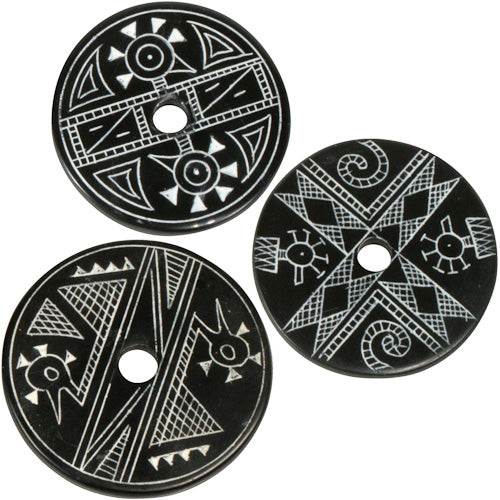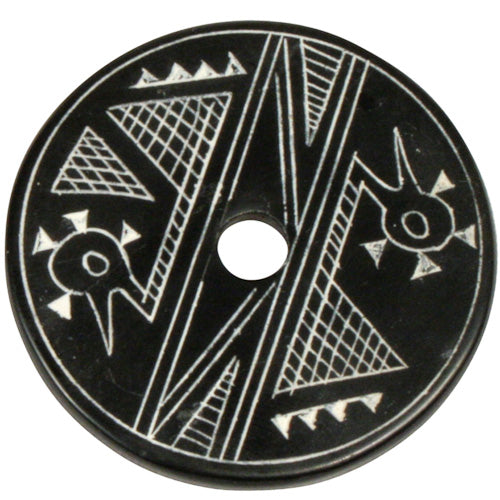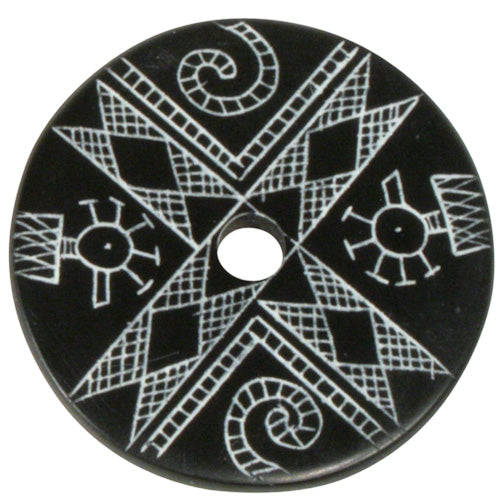OWP
Colgante de carbón con diseño de pato
Colgante de carbón con diseño de pato
No se pudo cargar la disponibilidad de retiro
El carbón, un poco interesante derivado del carbono que se encuentra en las profundidades de la tierra, ha sido cuidadosamente tallado y pulido a mano en estos clásicos colgantes redondos con grabados abstractos de patos. Comúnmente utilizada como combustible, esta roca sedimentaria negra es una pieza única para agregar a su colección de joyas o regalar a esa persona especial en su vida.
Hecho a mano por jóvenes artesanos del Proyecto Carbón Morca en Colombia a través de un esfuerzo iniciado por el gobierno colombiano para desalentar el trabajo infantil y capacitar a hombres jóvenes en nuevas profesiones.
- Mide 1-3/4” de diámetro y 1/8” de espesor
- Suspendido sobre un cordón negro de 36"
Hecho a mano en Colombia e importado de comercio justo.
Colombia
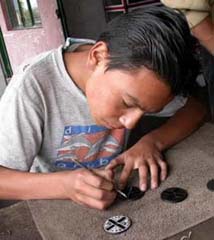
La comunidad de Morca, una zona montañosa en la ciudad de Sogamoso, Colombia, depende en gran medida de la minería del carbón para sustentar sus medios de vida. Las bajas y muertes son comunes en estas minas, ya sea por derrumbes o por inhalación de gases venenosos. En 1995, el gobierno colombiano estableció el taller Morca-Boyacá para mantener a los jóvenes y niños fuera de las peligrosas minas. Se animó a los niños de la zona a asistir a la escuela y aprender el oficio de tallar carbón en hermosas piezas de joyería.
La excesiva y prolongada minería en este pequeño pueblo de Morca ha hecho imposible la agricultura, dejando a los residentes locales con las minas de carbón como única fuente de empleo. Los hombres y niños responsables de mantener a familias numerosas son a menudo víctimas de estas implacables minas y de estas condiciones de trabajo inseguras. El proyecto Morca – Boyacá tiene como objetivo poder erradicar el trabajo infantil en las minas y brindarles a estos jóvenes una fuente de vida mejor y más saludable.
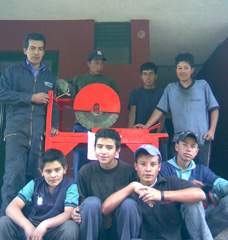
Por lo tanto, el gobierno colombiano ha estado construyendo redes con varias agencias de comercialización e importadores de artesanías para impulsar el mercado de las joyas de carbón. El proyecto Morca – Boyacá es un ejemplo de alianzas que dependen de One World Projects en los EE. UU. y la Universidad Pedagógica Nacional de Bogotá para ayudar a expandir el proyecto y encontrar mercados adecuados y más estables.
Share
About the Artisans
About the Artisans
 Joyeria Semilla meaning Seed Jewelry is a small fair-trade workshop in the Andean town of Villa de Leyva, Colombia. Girasol Taborda, a local artisan and social entrepreneur, started the workshop in the mid-1990s.
Joyeria Semilla meaning Seed Jewelry is a small fair-trade workshop in the Andean town of Villa de Leyva, Colombia. Girasol Taborda, a local artisan and social entrepreneur, started the workshop in the mid-1990s.
Joyeria Semilla’s objective is three-folds; to create new jobs, revive Colombia's handicrafts sector and to motivate locals to better manage their natural resources. The organization works primarily with socially and economically disadvantaged youths, single mothers and people with disabilities in the area. The company offers free training in product design, technical training and marketing to new members. Joyeria Semilla has trained them in the craft of jewelry-making.

Caña Flecha or “Gynerium Sagittatum” is a locally found palm tree in the regions of the Caribbean coast. The leaves from this plant are used for making jewelry, woven hats, bags and baskets. The Zenú Indians were and their descendants inherited the tradition of picking veins of the green palm leaf for weaving. These veins were made into woven hats and other products for their personal use.
The Zenú culture is said to have existed between 200BC to1600AD. With the arrival of the colonizers in the 16th century, the indigenous community declined of unknown reasons. Today a very small population remains that claims the inheritance of the almost extinct Zenú tribe. Known for their skills in the construction of major waterworks, canals and irrigation system along with being skilled goldsmiths, examples of their accomplished craftsmanship are found in various museums around the world. Their larger means of subsistence were hunting, farming, fishing and trading.
Caña Flecha is found in abundance in the region, and hence makes for a sustainable and naturally available raw material for these products. Every bit of the plant is utilized – from using in building walls and roofs in houses to food for cattle and medicinal purposes. It is from the central vein of the leaf that the fibers for weaving are obtained. After the hard surface is peeled off, the fibers are left in the sun to dry and undergo a natural tinting process; these fibers are barely about 1 millimeter in thickness and hence call for a lot of skill and patience to weave with. The dried fibers are then processed for natural coloration - some are boiled with lemon to whiten them and some are treated with mud and boiled with plantain leaves to blacken them. The designs are based on ancient motifs and mathematical representations, which are inspired by the early Zenú culture.
